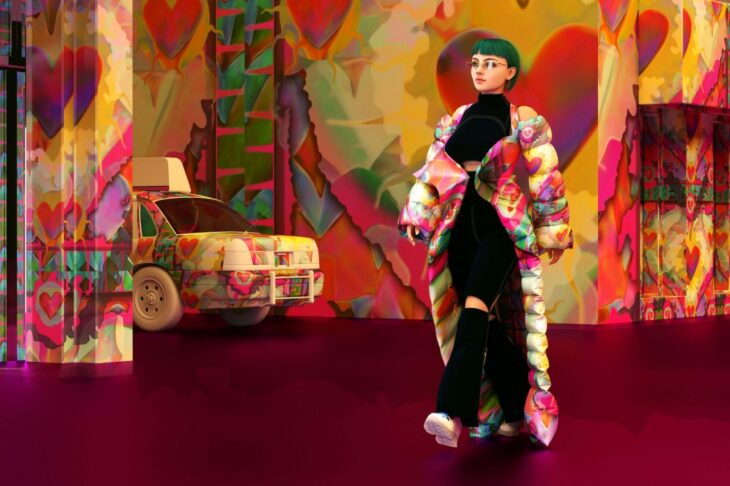When combining fashion and crypto, most picture a digital wearable from Decentraland, a luxury fashion house dropping an NFT collection, or a faux meta-handbag. Kharly Stauber, AVP of marketing at AscendEX, envisions real-world applications.
“Although it seems society’s approach to community will continue to shift digitally,” she explains, “I believe the key relationship between the two industries to be a bit more practical.” Not only does Stauber predict a profitable partnership for fashion and crypto, she sees fashion as a gateway for women into this new sector of finance on the blockchain.
Contents
Are NFTs authenticating real-world luxury fashion items?

Source: thedrum.com
In recent years, NFTs, digital assets, and cryptocurrency have moved from underground tech-talk to trending, hot topics. Industries watched apprehensively as the tide of acceptance turned in social media and e-commerce adoption. Cryptocurrency is gaining momentum, and traditional spaces like the fashion industry may find themselves in a game of catch-up if they don’t begin adapting. Fashion brands are working overtime to familiarize themselves with the ecosystem and explore what makes sense for their customers and brand strategy.
Diverse trades across the globe are turning to Web 3.0 as the new opportunity to engage consumers, curate excitement, and unlock a new wave of buyers. Instead of discussing whether or not to join the blockchain, today’s brands are debating how their brand can best take advantage of the digital market.
Like many other industries, fashion and luxury brands are experimenting with blockchain technology in branding and product strategy. One application involves authenticity. Including NFTs with fashion items enables designers to guarantee high-end products are what they claim to be.
In the past, the fashion industry had to rely on physical indicators of authenticity, such as garment stitching. Moving to the blockchain network allows fashion brands to demonstrate a product’s legitimacy with indicators that are entirely verifiable. “Digital certification of ownership virtually eliminates counterfeit markets. From my perspective within the crypto-industry, the connection between NFTs and luxury brands is seamless,” Stauber remarks. “The blockchain’s alignment with the uniqueness and scarcity of high fashion is non-fungibility personified.”
The Blockchain is bringing transparency to today’s fashion industry
The Blockchain is capable of conveying a record of far more than just ownership. Certain fashion brands use digital tokens to track a fashion product’s lifecycle from raw material to final point of sale. These corporations are gaining increased visibility into their data and enhanced ability to manage supply chain operations. This indisputable record also improves consumer trust by providing transparency into a product’s sustainability, ethical history, and place of origin.
“I’m encouraged by the potential. Fashion houses’ use of digital assets can motivate consumers to make confident, ethical choices,” Stauber remarks. “Transparency throughout the production process allows customers to avoid fast fashion, inauthentic sustainability claims, and fraudulent goods. The security provided through the blockchain strengthens customer trust by enabling them to feel confident in the integrity of their choices.
Luxury fashion is easing customers toward crypto purchases

Source: cryptonary.com
The percentage of consumers purchasing high-end fashion products with cryptocurrency is currently low, but brands are attempting to change that. During a pilot program this May, Gucci will be accepting cryptocurrency payments at select locations in New York, Los Angeles, Miami, Atlanta, and Las Vegas. The program will be available to Gucci’s full North America network during the summer.
While cryptocurrency may not become the dominant mode of payment for luxury fashion items overnight, many companies see crypto as the future and are positioning themselves to be on the front of the wave. For example, luxury watchmaker Franck Muller offers a timepiece exclusively available to customers purchasing with Bitcoin. Muller‘s Vanguard Encrypto, known as “the world’s first functional Bitcoin watch,” sports a dial with a laser-etched QR code for a public wallet address that allows wearers to deposit Bitcoins and check their account’s balance.
The Swiss watchmaker, Hublot, on the other hand, is announcing a partnership with the cryptocurrency wallet: Ledger. “It brings me great pleasure to introduce today a watch that fuses together the many tantalizing possibilities that link high-end crypto and state-of-the-art mechanical watchmaking,” says Ricardo Guadalupe, CEO of Hublot. “I firmly believe this is the year when the watch industry will come to embrace cryptocurrency. History will show the Hublot Big Bang Unico Ledger as a landmark collaboration that set the new standard for forward-thinking people who love watches, crypto, and shaping the future.”
Brands like these are normalizing cryptocurrency. With each purchase, consumers are opening digital wallets and allowing tokens to slip into daily life.
Fashion is opening the crypto community to women

Source: thewomenachiever.com
Despite its utility, the number of women involved in crypto is shockingly low. In fact, less than 5% of entrepreneurs in the crypto space are women. CNBC’s 2024 Invest in You: Next Gen Investor survey reveals that there are twice as many crypto investors among men than women. The number of women investigating digital assets is growing, but many continue to shy away from crypto markets because of the volatility and risk.
Stauber strongly believes more women are needed in the shaping of today’s crypto space, and she looks to fashion brands to hold the door open. People know, trust, and will follow these brands.
In Stauber’s opinion, inclusivity expedites adoption. The fashion industry can open a community in the blockchain and welcome a whole new portion of the population. Adoption will accelerate as trusted brands and faces bridge the gap between the physical and digital worlds. “I believe crypto is the future,” she says. “As these luxury brands enter the space, they are educating new audiences about a more autonomous, trustworthy, and ethical financial future.”
Women in crypto are changing the future
It stands to reason that a decentralized financial future hinges on the trust and integration of women, who comprise 49.5% of the population. “If the crypto ecosystem expects to survive, it must break away from the gender disparities that have plagued traditional finance,” argues Stauber. “The idea of participating in yet another ‘boys club’ is intimidating, but women are already establishing a foothold. As more women take on leadership roles in this space, female consumers will feel even more welcome to engage in this under-tapped market.”
By dipping their toes into the crypto space, women gain an opportunity to make their mark on the blockchain’s evolution. Joining early allows them to shape the future of crypto through developing new approaches to leadership, advancing innovation, and shifting the antiquated practices tied to traditional finance. “If you’re in crypto, you’re early,” Stauber says. “If you’re a woman in crypto, you’re even earlier.”
